Yesterday And Today
A Story of Pluck: The Banjo on Exhibit and in Concert at the Museum of Making Music
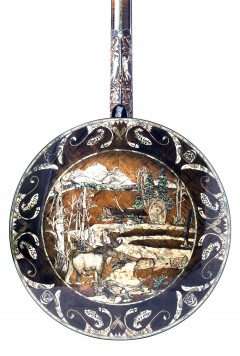
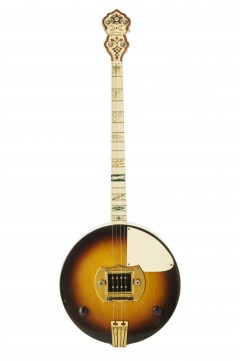
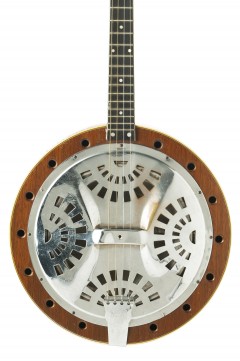
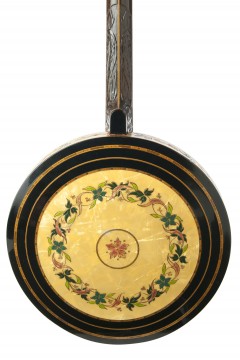
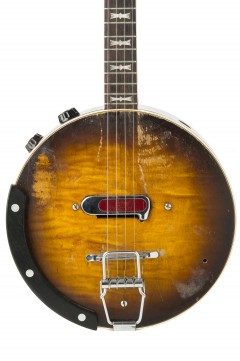
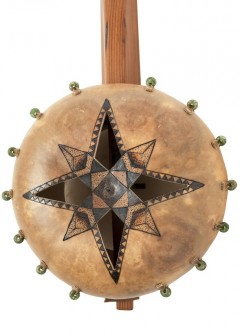
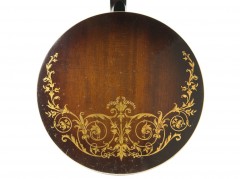
Linus, the intellectual yet insecure blanket-hugging child in the comic strip Peanuts, believed that all babies should be issued a banjo to help cheer them as they enter this cold, frightening, and confusing world. And back in the seventies, comedian Steve Martin assured us all that, similarly, the whole country would be better off if the president were a banjo picker. Martin’s musings conjures up images of John Boehner and Mitch McConnell melting to the suggestions of more comprehensive national healthcare insurance and bold action on climate change as Barack Obama launches into a spirited rendition of “Fox on the Run” on his five-string.
Okay, maybe the banjo can’t save us from our political leaders, nor is it a panacea for the insecurities of our newborns. But the banjo is a wonderful instrument, and the Museum of Making Music is spotlighting this often pigeon-holed, misunderstood, and sometimes maligned instrument in a special exhibit titled The Banjo: A New Day for an Old Instrument. The museum opened the exhibit at the end of March and runs through October of this year.
The banjo has had some popularity from time to time. During the sixties this country’s airwaves were drenched with Flatt and Scruggs’ “Foggy Mountain Breakdown,” the “Stairway to Heaven” of the bluegrass world, having been part of the soundtrack to the hit film “Bonnie and Clyde.” And another movie soundtrack, this time in the seventies, had the country going crazy for “Dueling Banjos.” These were pretty much one-off hits, with no further interest in the banjo developing past the world of country music and bluegrass.
More recently, however, the banjo has been enjoying a new popularity. B.J. Morgan, a drummer who has been with the Museum of Making Music for 14 years says, “The banjo now figures prominently in such bands as Mumford and Sons and the Dropkick Murphys. This new interest in the banjo is what prompted the museum to put on this exhibit.”
The banjo exhibit starts at the beginning, with artifacts and replicas of some of what might be considered the forerunners of today’s banjo. These go back to the 1800s and include examples of instruments created in Africa, the birthplace of the banjo. In West Africa animal skins were stretched over gourds to produce drums. Later a neck and strings were added to make lute-like instruments. Names varied for this beta version of the banjo; it was called the ngoni or the xalam, with the ekonting, an instrument with a long neck and three strings, most resembling the banjo of today.
As Africans were enslaved and brought to the New World, they brought their instruments, or at least the design of the instruments, with them. In the seventeenth century banjos were heard on the islands of the Caribbean and later on the North American continent.
By the nineteenth century, when whites had adopted the instrument in their minstrel shows, the instrument was beginning to look like the modern-day banjo, yet there were definite differences. It had a wooden rim, with metal brackets to hold the animal hide in place. The neck, usually made of maple, did not yet have frets and was longer than the necks of today’s banjos.
After the Civil War, the banjo’s increasing popularity, as well as acceptance by the growing middle class, saw the production of the instrument move from artisan luthiers to small factories. The instrument was made louder by the addition of tone rings around the sound chamber. Frets were added, and many banjo makers began adding pearl inlay and ornate engraving to entice the emerging bourgeoisie to buy their instruments. The four-string banjo, which was louder than its five-string cousin, came along in the early twentieth century. Musicians started playing it with a plectrum instead of their fingers to compete volume-wise with the other instruments of the then new jazz bands.
Post-war America was eager to innovate. This was as true of musicians as it was for scientists and engineers. Jazz musicians developed bebop, and in country music, almost single-handedly, Bill Monroe came up with the new sound of bluegrass. And bluegrass would not have carried its most signature sound without another innovator, Earl Scruggs. It was the young Scruggs in Monroe’s band who took the five-string banjo and, instead of playing the instrument with a strumming technique known as clawhammer, played the banjo by plucking the instrument with the thumb and two fingers of his right hand. When most folks think of the banjo, it is this rapid note-upon-note sound that comes to mind, what you hear in “Dueling Banjos” and “Foggy Mountain Breakdown.”
Jazz abandoned the banjo decades ago and in the meantime went through the developments of swing, big band, straight ahead, and bebop. Back in the seventies Bela Fleck reintroduced the banjo to jazz. He and his Flecktones play what might be considered a type of jazz/rock fusion.
Currently the banjo is being advanced and hybridized with other instruments. The exhibit includes a cavanjo. Morgan explains that the cavanjo is a banjo that is augmented with magnetic pickups, similar to the ones found on electric guitars. He says that there has always been a desire to place electronic pickups on the banjo, but attempts to do so interfered with the instrument’s natural resonance.
Morgan goes on to say that this instrument that is almost synonymous with American pluck, a “happy” instrument that is supposed to make the world a better place for infants and everyone else has a dark side, a piece of its history that influenced the music it would make and the audiences who would hear the instrument to this day. The exhibit chronicles the times of the minstrel shows, a forerunner of vaudeville that was popular in this country during the 19th century. Minstrel shows featured a mixture of comedy and music. Much of the laughs were at the expense of blacks, who were depicted as buffoonish, lazy, and superstitious. White entertainers depicted blacks in blackface, and, stranger still, blacks performed later in minstrel shows after the Civil War in blackface as well.
Though black musicians still played the banjo, as in New Orleans style-jazz or as a featured instrument in black string bands, such as Martin, Bogan, and Armstrong, African-Americans turned their backs on the banjo largely, it is believed, by some historians, due to the degrading depictions of them, along with their banjos, in the old-time minstrel shows. That is now changing. Bluesman Otis Taylor plays the banjo, and the Carolina Chocolate Drops perform with the banjo as they embrace old-time music.
The Deering Banjo Company, which has been producing banjos here in San Diego for the last 40 years, provides an interactive workbench for the exhibit that demonstrates the construction of a modern-day banjo.
The banjo exhibit is one of many such exhibits at the Museum of Making Music. It is called the Museum of Making Music and not the Museum of Music for a reason. The museum’s emphasis is on the instruments that people have developed or invented to make music. Through their exhibits the museum explores how and why instruments come into being, their histories, and why certain instruments become popular. The museum concentrates on popular music, as it is in that area that most of the development of new instruments and hybrid instruments has occurred during the past century.
Filling out the banjo exhibit is a concert series, 11 performances in all, that features banjo players and music of the banjo. The series began this spring, with a performance by the son and daughter of sixties pop country icon Glen Campbell, Ashley and Shannon Campbell, and their indie-folk group Victoria Ghost. The concert series continues through this fall with Tony Trischka, Otis Taylor, Alison Brown, Bob Carlin and Cheick Hamala Diabaté. This month’s featured performer is multi-instrumentalist and thrift shop maven David Lindley. On August 29th and 30th the Museum of Making Music will host a celebration of local banjo players, which will feature banjo circles, banjo-playing workshops, and more.
To find out about admission and ticket prices for the banjo exhibit, as well as the banjo concert series, visit the Museum of Making Music’s website at www.museumofmakingmusic.com.
So far, the response to the banjo exhibit has been a collective, “Gee whiz, I didn’t know that!” as folks stroll through the exhibit. Unless you’re a banjo scholar, there is something to surprise just about anybody. Morgan confesses that he is constantly surprised by all the exhibits that are sponsored by the Museum of Making Music. “It’s stimulating here,” he says. “As with the banjo exhibit, and the recent exhibit that focused on the ukulele, I’m always challenged to learn new things. It’s like reading a new book all the time.”






